World War II Love Stories Read online
Page 5
Desmond passed all his school subjects—including French—with flying colors
By contrast, Louisa’s childhood in Liège, Belgium, was over-shadowed by tragedy. Her father, who had been a miner for 34 years, since the age of ten, died of pneumonia. Louisa was just two years old, but she never forgot watching her grief-stricken mother wrap his feet in scarves, trying desperately to keep her father warm as the coldness of death gradually took hold. For the next five years, Louisa was dressed only in black mourning clothes, and they struggled to survive on the money her mother made as a cleaning woman and seamstress. She worked such long hours that Louisa was what we would now call a “latchkey kid,” letting herself in after school and waiting alone until her mother came home at around eight in the evening. Louisa nevertheless did very well at school and, at the age of 14, she won a place to train as a primary school teacher at the prestigious École Normale in Liège, where the teachers encouraged her and discreetly loaned her the money to buy textbooks. She knew it would be difficult for her to marry someone from an educated background, since at that time in Belgium, girls required a dowry in order to marry well and there was simply no one to provide one for her. Then in May 1940, just as Louisa was celebrating her 20th birthday and graduating as a primary school teacher, Hitler’s troops swept into the country and everything changed overnight.
Desmond (front row, second from left) with some of his comrades from the Royal Electrical and Mechanical Engineers, which was formed in October 1942 to maintain all the army’s electrical and mechanical equipment.
A Fateful Meeting
Desmond volunteered for the Territorial Army in September 1938, when he and his family believed war was imminent; in this way, in the event of war he couldn’t be conscripted as “cannon fodder.” He chose to become a technical clerk with the Royal Electrical and Mechanical Engineers, which would let him pursue his interests in machinery and technology. He was sent to a base near Cardiff, Wales, where he ran the office that ordered spare parts for anti-aircraft guns and sometimes helped out in the workshops mending equipment. He also took advantage of a scheme whereby military personnel had free access to art history classes at Cardiff Art Gallery. On Saturday nights, the soldiers all went to the local dance and Henry met one girl he liked enough to give her his rosary beads, but nothing more came of it.
Louisa was unable to find a job as a primary school teacher in Liège and risked being rounded up to work in a German labor camp if she remained unemployed. She asked around, and through one of the women for whom her mother provided sewing services, they were both offered jobs and accommodation in Brussels, working for a Belgian woman who had a jewelry business. Louisa would be a secretary while her mother would be a cleaning woman, and they could live in a flat above the premises at 19 Rue du Pont Neuf. It was a colorful area of central Brussels, with a brothel-cum-transvestite cafe on the same street, but they were relieved to be “safe” given the horror stories they heard of what was happening to those around them in Occupied Belgium.
In 1942, a young woman called Elly Gelenne came to hide in the house, distraught because her husband Paul, who worked for a Resistance group, had just been arrested by the Gestapo. Louisa and her mother comforted Elly as she awaited news and then consoled her when, in March 1943, she read in the local paper that Paul had been executed. Life was tough in many ways: the rations for a month only lasted a week, after which they were forced to buy essentials on the black market, and there was no money for new clothes, so they had to use their sewing skills to “make do and mend.” Louisa was a sociable girl who liked meeting people but she spent most evenings at home with her mother and Elly, hoping and praying for the day when the Occupation would finally end.
For the first years of the war, Desmond was based in England, but in June 1944 he was sent to France as part of the support team behind the second wave of the Normandy landings. The realities of war quickly came home to him when the troopship on which he was to be transported across the Channel was bombed as it lay moored in port. It was hit by what turned out to be a remote-controlled bomb—probably one of the first V-1 flying bombs to be launched at the UK; Desmond was lucky to be on an upper level and able to escape by climbing over the debris which had fallen on top of his comrades on the lower decks. He finally landed with the Canadians on Juno Beach, at a place called Le Hamel. But soon after his arrival he watched as the Sherwood Foresters set out for the front in their distinctive Lincoln-green uniforms, only to be brought back that evening as a pile of bodies on the back of a truck.
Desmond arrived at Le Hamel, Normandy, in June 1944. Tanks and motor vehicles were driven directly onto the beach.
D-DAY
The Allied invasion of Normandy began on the evening of June 5, 1944, when two groups of Allied bombers dropped tinfoil strips over Pas-de-Calais to confuse German radar, then just after midnight on June 6th, 1,760 tons of bombs were dropped on German troops defending the Normandy coast. A total of 6,500 vessels crossed the Channel carrying 194,000 troops to five beaches codenamed Sword (British troops), Juno (Canadian), Gold (British), Omaha (US), and Utah (US). By the end of the day, 150,000 men were ashore and the only German division in the area had been scattered. It would take six more weeks of fierce fighting before they were able to advance out of Normandy, but a foothold in Occupied Europe had been established after one of the most remarkable pieces of military planning the world had ever seen.
Dwight D. Eisenhower’s message to the Allied troops taking part in the D-Day landings. On it, Desmond has written, “We were all there in the first week of the June 1944 invasion,” and “112 HAA Regiment workshop Coy.”
Men waded the last few yards to shore.
Desmond’s unit advanced to Lisieux, Amiens, and Pont-de-Briques in northern France, where his French language skills were much appreciated by his comrades, who were thus able to communicate with local people. Because of his French fluency, in September 1944, his colonel asked him to deliver a sensitive letter to a woman living in Brussels—a woman named Elly Gelenne. He didn’t know what the letter contained, but was simply given an address: 19 Rue du Pont Neuf.
A Rapid Courtship
Desmond had no idea that he was the bearer of a letter bringing news that Elly’s husband Paul Gelenne had been tortured before being murdered by the Germans in Breendonk Concentration Camp. Elly was devastated. She showed the letter to Desmond, who comforted her as best he could. He was about to take his leave when Elly invited him to stay for dinner and called Louisa down to join them.
Desmond introduced himself as “Paul Henry,” as he always did when speaking French because “Desmond” was often mispronounced as “demon” by French speakers. Louisa told him her nickname, “Loup” (“wolf”), pronounced with a silent “p.” Despite the tragic circumstances of the dinner, Desmond and Louisa were immediately attracted to each other, finding that they shared a love of French poetry and literature. Louisa was captivated by this gentle, witty English soldier and Desmond was taken by the “utterly charming” French-speaking girl. They swapped addresses, and thus began an intense correspondence.
Together in Brussels in the winter of 1944-45 after Desmond’s proposal of marriage.
Over the next few months, Desmond’s unit moved from northern France into Belgium and then Holland, and whenever he had leave and could procure transport, he traveled to Brussels to see Louisa. They went to the cinema together, or went out dancing, after which he stayed in a dedicated leave center for British servicemen in Brussels. After one such trip in November 1944, he was making his way back in an army truck to join his regiment, which was again on the move. Just before he reached them, a V-2 bomb hit the convoy. The force of the explosion was such that Desmond’s truck was lifted into the air and flipped over, but he managed to crawl out with only cuts and bruises. His comrades in the regiment weren’t so lucky and he lost many friends that day; had he been in his usual place in the convoy, he would almost certainly have been killed.
On December 1
6th, he was once again in Brussels with Louisa when his comrades went to the Rex Cinema in Antwerp to watch a film. A V-2 bomb hit the cinema directly and 567 people were killed, 291 injured. Desmond told Louisa he would have been there if he hadn’t been with her. Once again their relationship had saved him.
While he was back in England on leave that Christmas of 1944, Desmond bought a solitaire engagement ring, at a cost of 20 pounds. He had only known Louisa for three months, and in that time he had only seen her five or six times, but already he was certain of his feelings. He proposed to her early in the new year and she was overjoyed and accepted right away. They got married on May 19th, 11 days after VE Day, in a civil ceremony at the Hôtel de Ville in the Grande Place in Brussels, where servicemen were allowed to jump the long queue of couples waiting to get married. This was followed by a Catholic church service, then dinner back at 19 Rue du Pont Neuf for family and a few friends.
Desmond and Louisa’s wedding day, May 19, 1945, outside the Hôtel de Ville in Brussels, 11 days after the Allies won victory in the European war.
They only spent one night together as man and wife before Desmond had to get back to his base in Germany. Louisa spent many anxious days worrying that he might be posted to Asia and that, if he were killed, he would leave her pregnant and alone. In fact, it was she who nearly lost her life after falling ill with appendicitis and Desmond who was fortunately able to pay for her life-saving surgery.
Louisa spoke no English at the time of her marriage. She had only known Desmond for a few months…
Leaving Home
Louisa spoke no English at the time of her marriage. She had only known Desmond for a few months and she hadn’t met any of his family, so she was taking a huge leap of faith in marrying him, but she loved him so much that she was willing to put her fate in his hands. Desmond had explained to her that they would have to live with his parents until he found work and could afford to buy them a home of their own. In fall 1945, she sailed across the Channel on a boat packed with war brides coming to England to make a new life. She got to chatting with a couple of Belgian girls in the same situation, and they kept in touch on arrival, swapping notes about their experiences in postwar Britain.
After the wedding (from left): Elly Gellenne, Louisa’s mother Catherine, Louisa, Desmond, and Jeanne Delbouille, Louisa’s older sister. It was the start of a whole new life for Louisa.
Louisa was met in Leeds, Yorkshire, by her new father-in-law and taken back to Desmond’s family home, where she would stay in the spare room. She was eager to make a good impression, but found it difficult when she was only gradually learning English. When Desmond’s father burped and said, “Excuse my belch,” Louisa mistakenly thought he was being rude about the Belgians (or Belges). Desmond’s grandmother asked if she was “accomplished” and Louisa was ashamed to admit that she couldn’t play the piano because they hadn’t had one at home. She also didn’t like English food, except for the puddings, and, all in all, she felt very insecure at first. But Desmond’s family soon came to understand what he loved about his caring, lively, and intelligent bride.
GERMANY’S V ROCKETS
Working in a base at Peenemünde on the Baltic coast, rocket scientist Wernher von Braun developed a new range of unmanned flying bombs for Germany. The first V-1 rockets were fired at London on June 13, 1944, and had a range of 125 miles and warheads weighing 1,875 pounds. V-2 rockets were even more deadly, with a range of 200 miles and 2,200-pound warheads, and they flew so fast and so high that they were almost impossible to shoot down. Over the next year, 33,000 people would be killed or injured by V rockets fired at England and many more died on the Continent as the rockets were used to target the advancing Allied troops. After the war, von Braun worked on US missile programs, then joined NASA and helped develop the rocket that in 1969 would carry Neil Armstrong and Buzz Aldrin to the Moon.
A V-1 rocket in flight, 1944. They were known by the British as “buzz bombs” or “doodlebugs.”
Desmond wasn’t demobilized until late 1945, when he came back to Leeds, and in the summer of 1946 was able to whisk Louisa off for a belated honeymoon in Torquay on England’s southwest coast. He had been thinking of training as a primary schoolteacher, but Colonel Leigh, the head of his regiment, had recognized how clever he was and suggested that he apply for a bursary available to ex-servicemen who wanted to go to university but whose qualifications didn’t meet the usual entry requirements. Desmond successfully passed an entrance paper and from 1946 through to 1949 he studied philosophy at Leeds University, obtaining a first-class honors degree, then was immediately offered a teaching post at Manchester University. Money was very tight starting off, but in 1951, Desmond and Louisa were able to buy their own home, three years after their eldest daughter was born. She was the first of three girls altogether and, eventually, six grandchildren.
During the early 1950s, inspired by his wartime experiences with anti-aircraft artillery, Desmond bought an army-surplus bombsight computer originally employed on bomber aircraft to calculate the time at which to release bombs so they would hit their targets. Captivated by the “peerless parabolas” of the computer’s inner moving parts, he decided to convert it into a drawing machine and so capture this mechanical movement on paper. In 1961, Desmond won an art competition at Salford Art Gallery, for which the prize was a one-man show in London’s West End. When the competition judge, L.S. Lowry, saw his drawing machine in action, he insisted Desmond include machine-generated pictures in his one-man show. Further exhibitions of machine-generated art followed and Desmond became recognized as a computer-art pioneer.
So while the war brought bereavement and misery for many, for Desmond it meant he was able to express his creativity and achieve academic acclaim while providing a decent standard of living for his family. And for Louisa, it brought her a refined, intelligent, Francophile husband without any need for a dowry.
A drawing by Desmond in Hamburg, 1945: it may be the medieval monk Abelard, in whom he was interested.
Étienne & Violette Szabo
Violette and Étienne were an extraordinarily good-looking couple, who turned heads wherever they went.
A chance meeting in a crowded London street between a young Parisian girl and a Hungarian-born officer was responsible for creating one of the war’s most renowned heroines, as well as one of its most tragic love stories.
Violette knew all about wartime romance because her French mother had met her English father in Paris during World War I. They came to live in London when Violette was 11, and at the outbreak of World War II she had a job selling perfume in the Bon Marché department store in Brixton.
Violette in a carefree mood before the war. She loved sports and dancing.
By mid-1940, thousands of French nationals had arrived in London fleeing the Nazis, and it was soon decided that on Bastille Day, July 14th, they should parade past the Cenotaph. Violette went along with her friend Winnie Wilson, because her mother had suggested that she find a homesick French soldier and bring him back for dinner. Winnie and Violette didn’t want to appear too forward, but eventually they began chatting with a handsome member of the French Foreign Legion by the name of Étienne Szabo. He was delighted to accept the invitation, enticed no doubt by Violette’s beauty as much as the prospect of a home-cooked meal.
Over dinner, Étienne told Violette’s family a little about himself. Born in Hungary, he had been orphaned at an early age and sent to live with relatives near Marseilles. He’d joined the Foreign Legion in his early twenties and had already seen action in Narvik, Norway, when his unit landed by sea in the middle of a German troop deployment and was forced to retreat across the border to Sweden.
Violette was mesmerized. Courageous and utterly determined that the Nazis must and would be defeated, Étienne was by far the most interesting, exciting man she had ever met. When he asked if he might see her again, her answer was a definitive “Yes.”
A 38-day Courtship
Violette and Étienn
e met every day for the remainder of his leave, then wrote to each other daily when he returned to base. Within weeks they had fallen passionately in love and were discussing marriage. Étienne spoke no English and Violette’s father spoke no French, but Étienne learned just enough broken English to allow him to ask formally for her hand in marriage; at the age of 19, she was technically still a minor, so permission was required. Her parents were shocked by the speed of the courtship and the 11-year age difference, but they could tell that Étienne was a gentleman and knew their headstrong daughter better than to stand in her way.

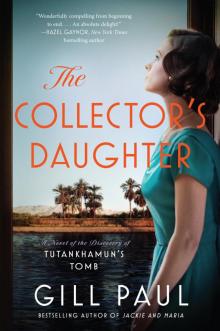 The Collector's Daughter
The Collector's Daughter The Lost Daughter
The Lost Daughter Jackie and Maria
Jackie and Maria The Affair
The Affair Love...Maybe
Love...Maybe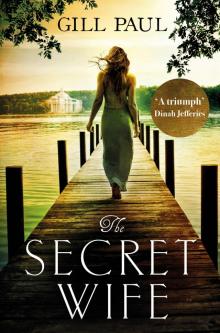 The Secret Wife
The Secret Wife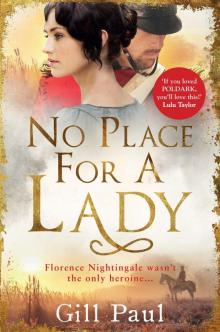 No Place For a Lady
No Place For a Lady Another Woman’s Husband
Another Woman’s Husband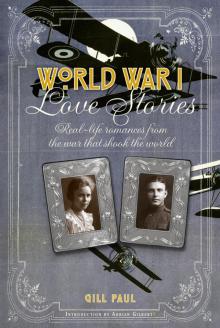 World War I Love Stories
World War I Love Stories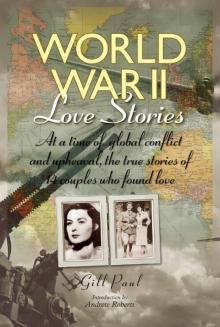 World War II Love Stories
World War II Love Stories